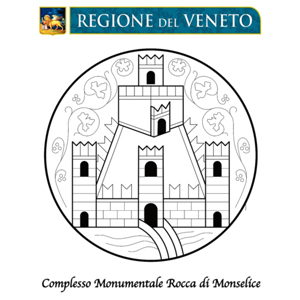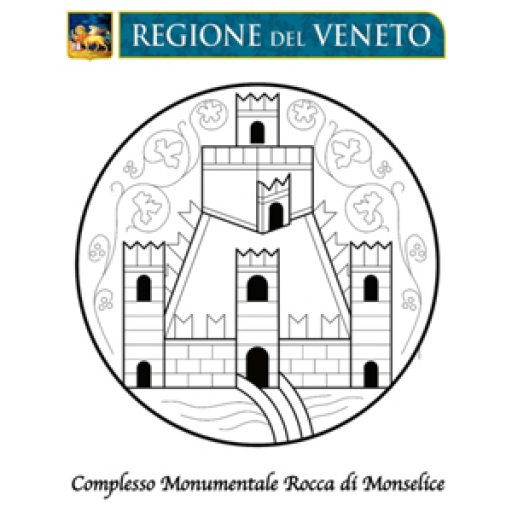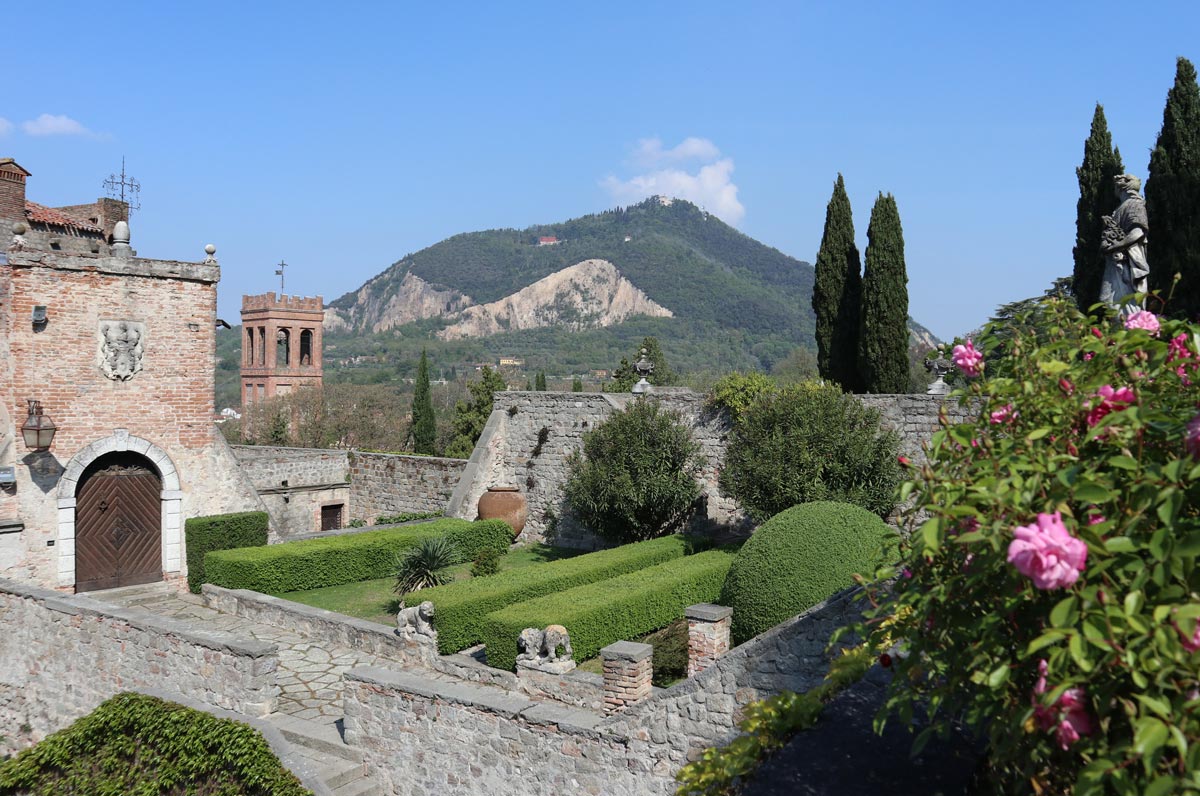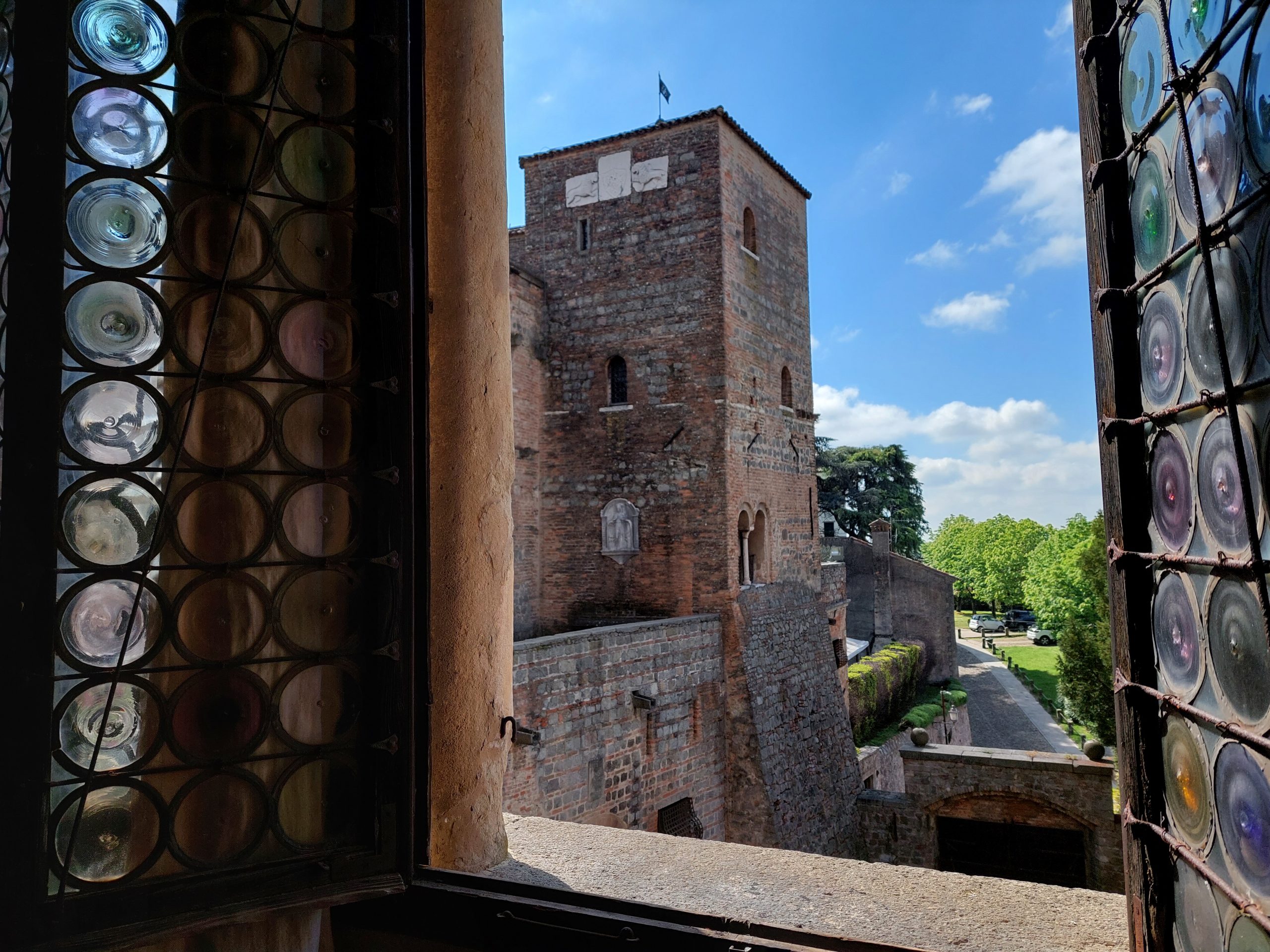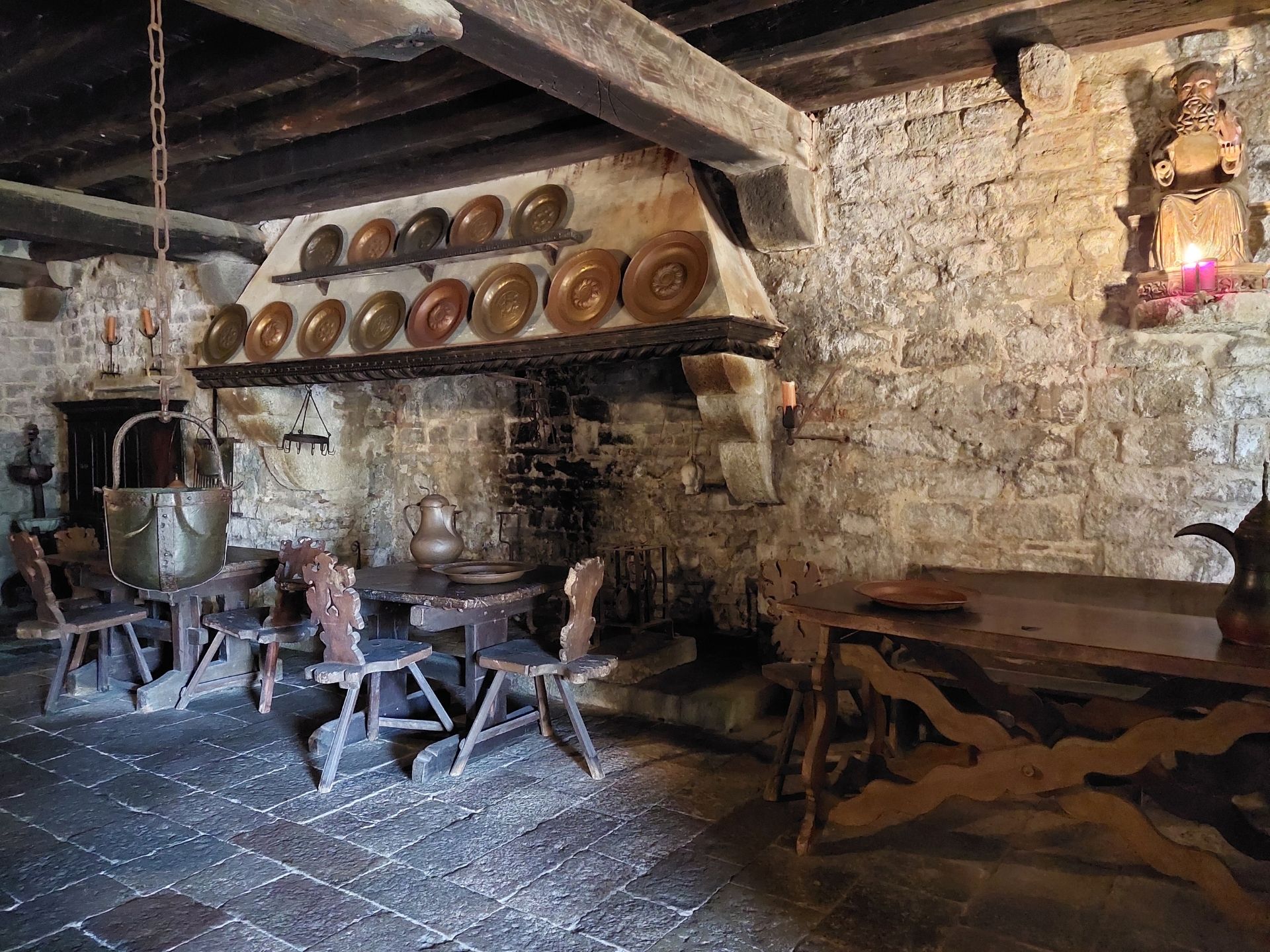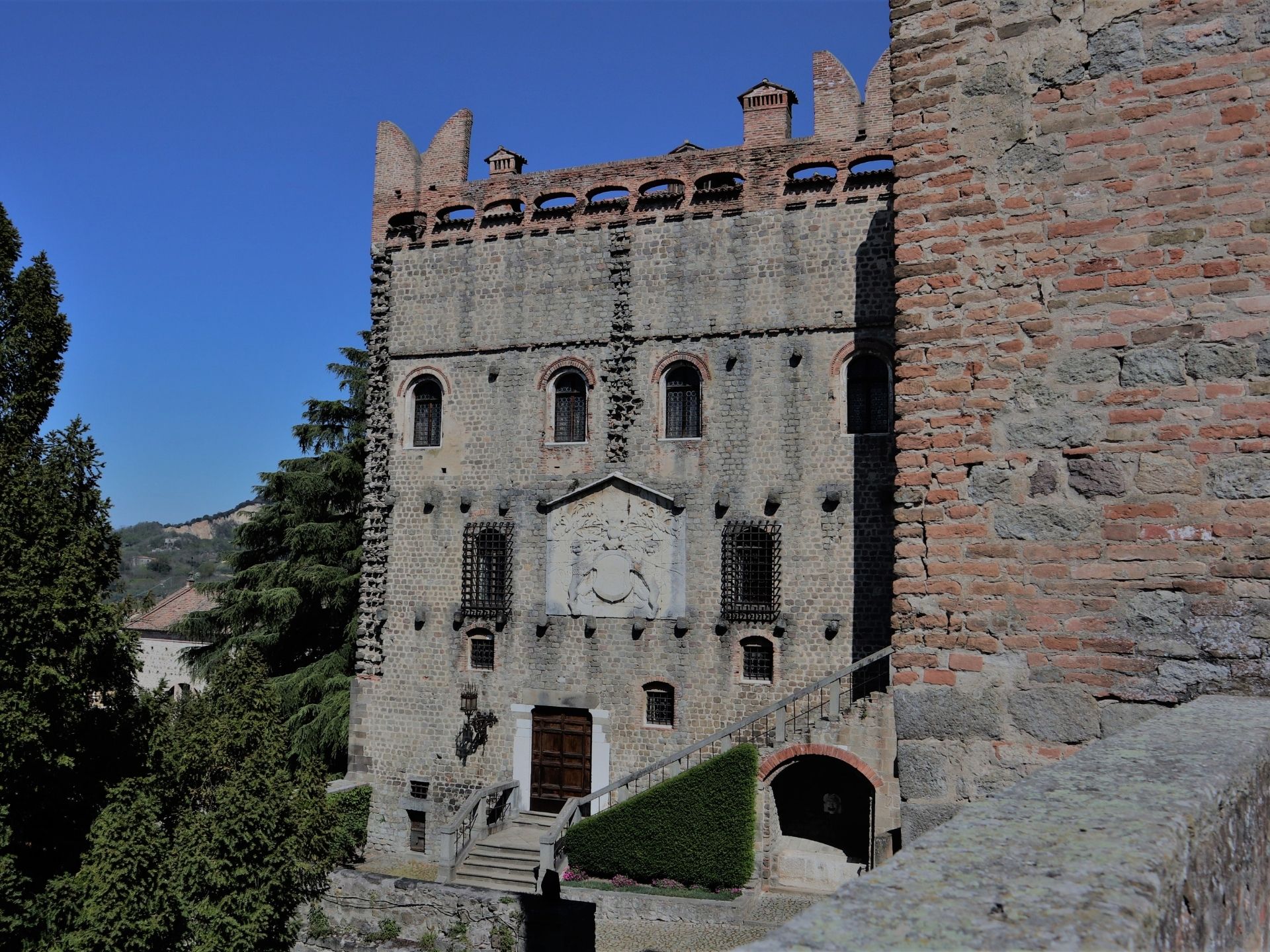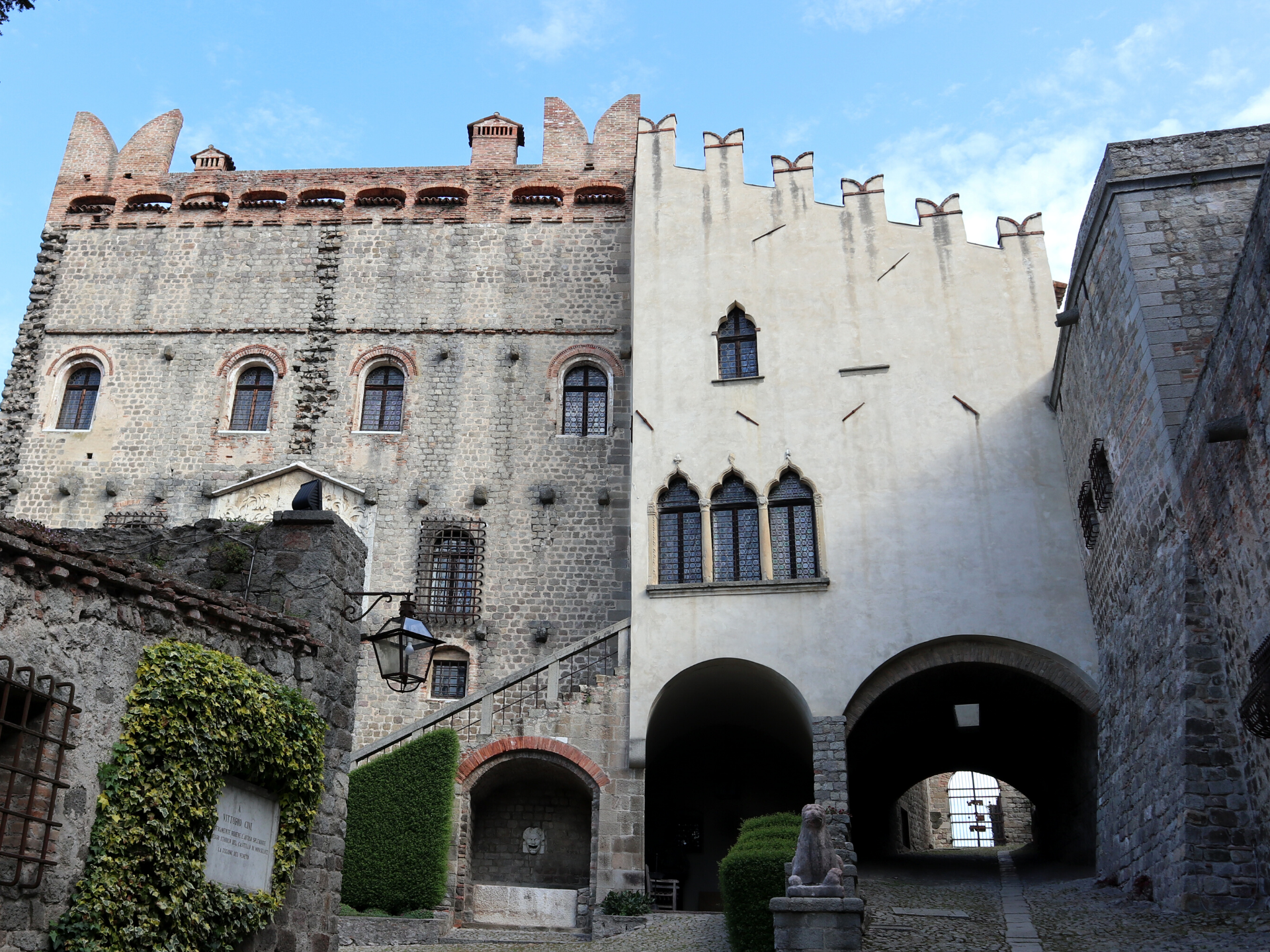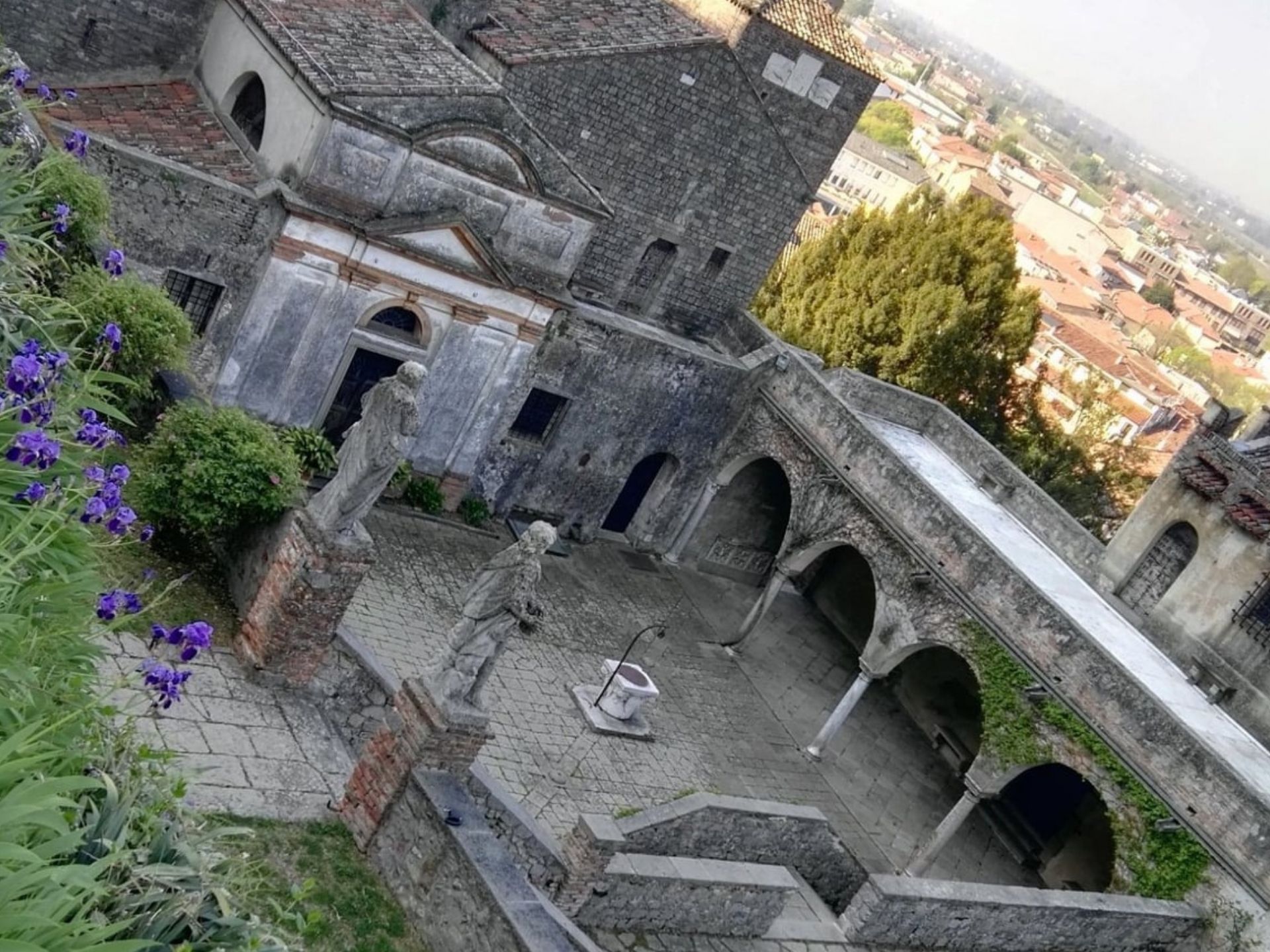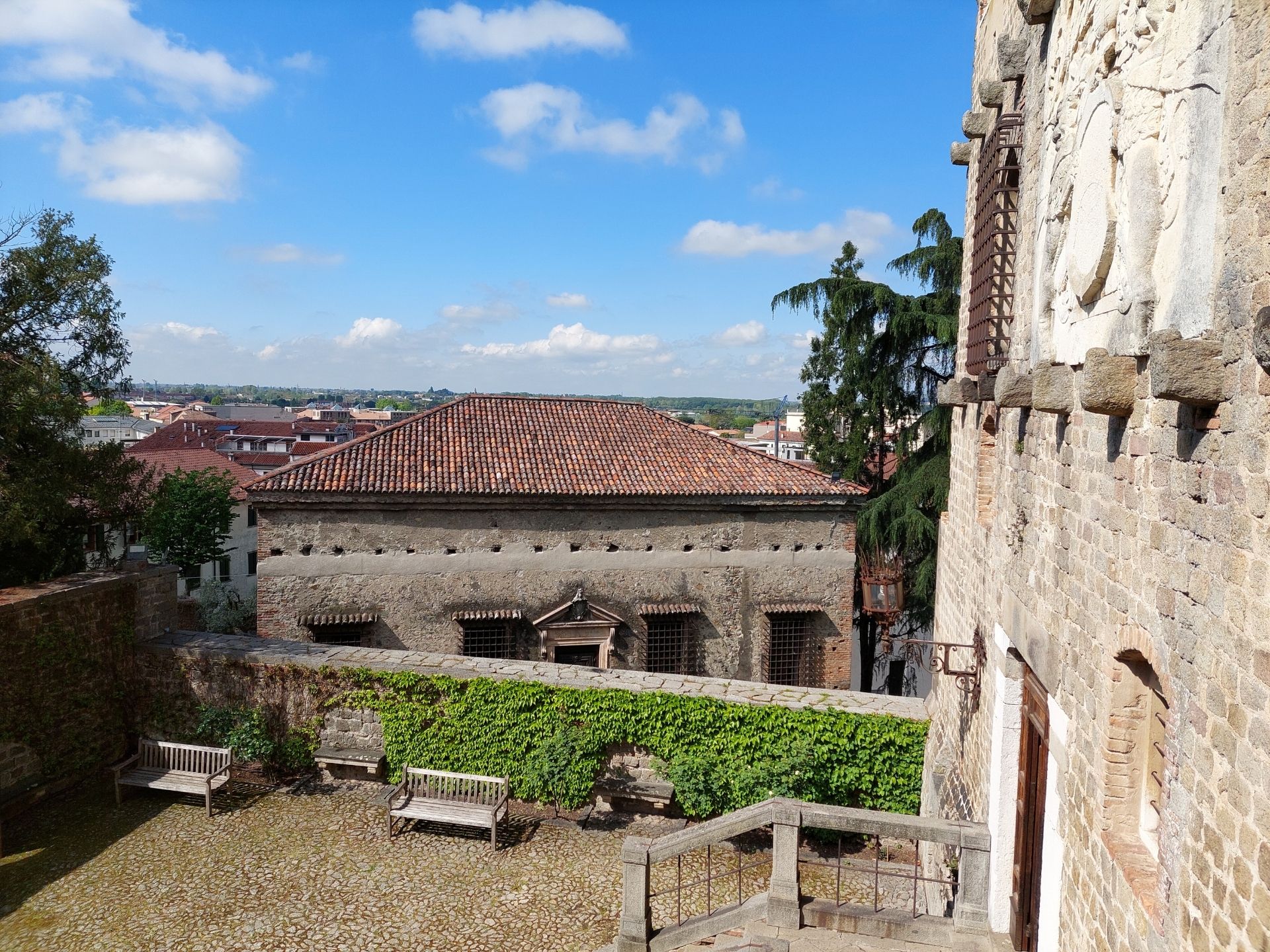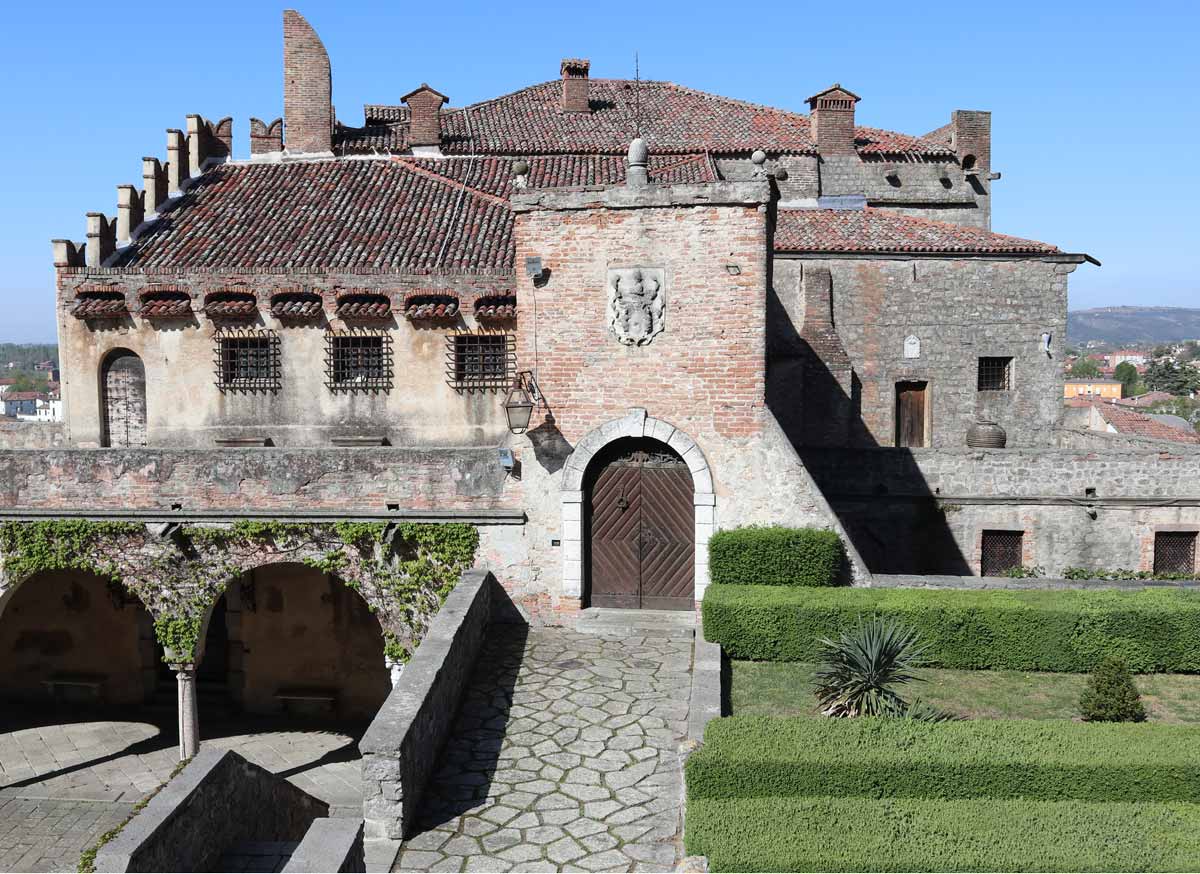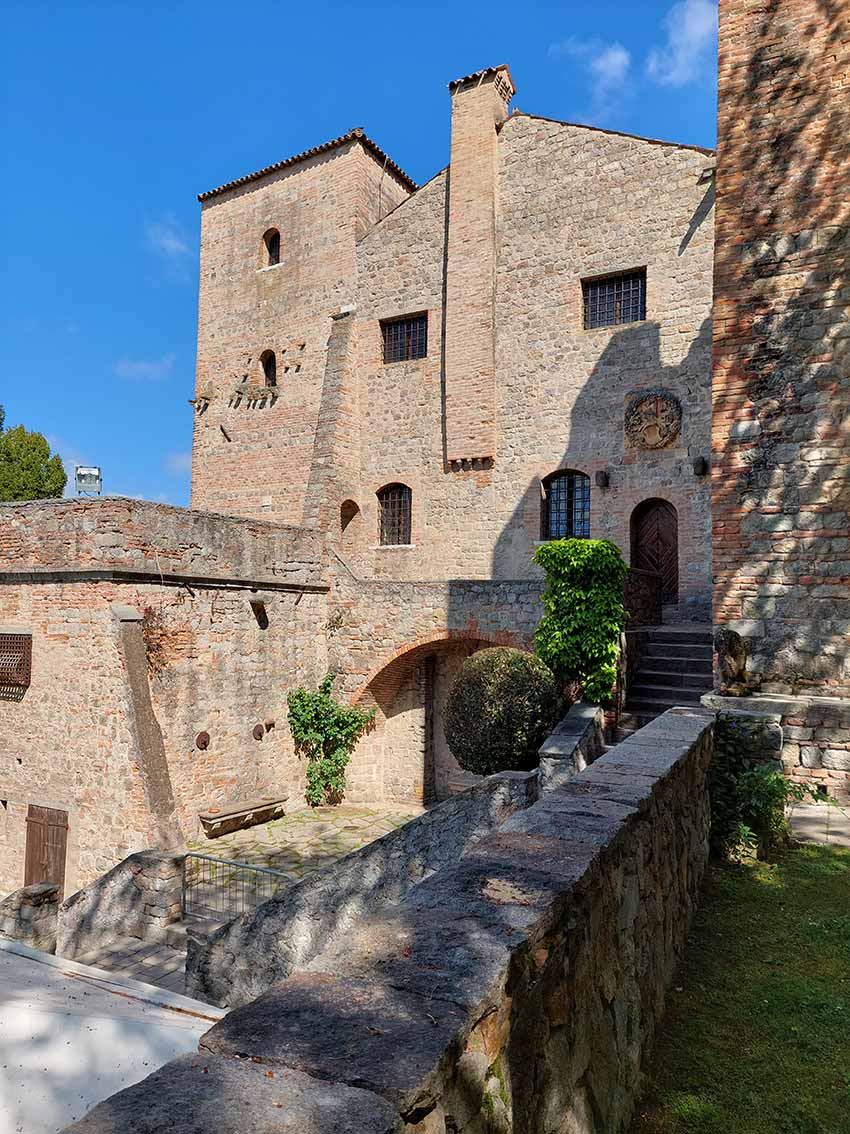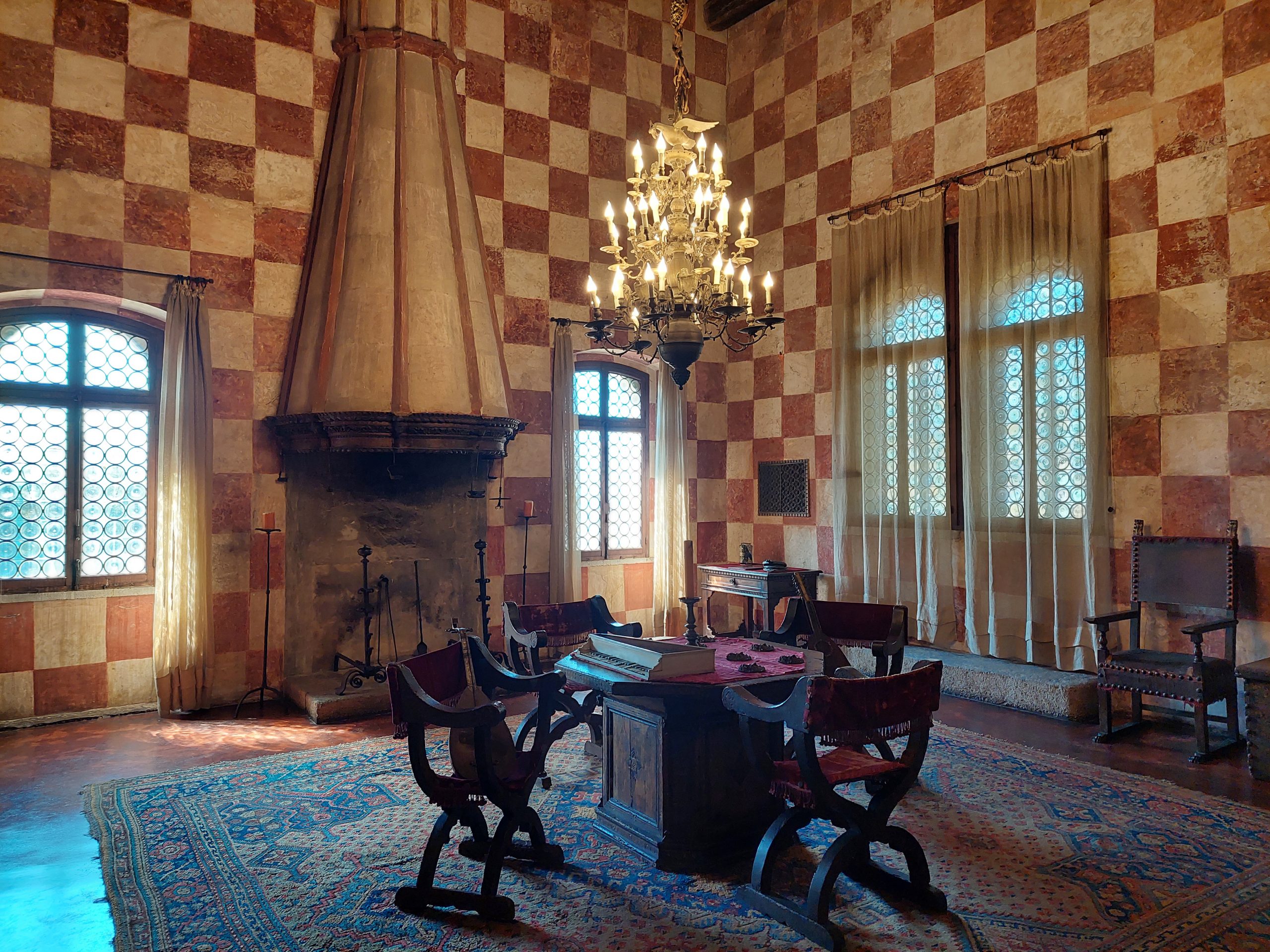


The Castle is made up of four main buildings
At the foot of the Rocca hill stands a majestic complex of buildings named Cini Castle, which was turned into a medieval dwelling house, a defensive tower and then into a Venetian villa between the eleventh and the sixteenth century.
The Castle is formed by four principal structures: the most ancient one is composed of the late eleventh-century building called Romanesque House (Casa Romanica) and of the Little Castle (Castelletto) dated back to the twelfth century.
During the thirteenth century the Castle was enlarged with the fortified building called the Ezzelino’s Tower (Torre Ezzeliniana), a massive tower built up by Ezzelino III Da Romano, deputy of Emperor Frederick II of Swabia.
The large rooms in the keep are characterised by “towered” fireplaces made by the fourteenth-century Da Carrara noble family of Padua.

Since 1405, after the conquest of Monselice by the Venetian Serenissima Republic, the Castle was entirely bought by the Marcello aristocratic Venetian family, who undertook the construction called Ca’ Marcello (Marcello’s Palace), i.e. a beautiful connecting building in Venetian-gothic style.
The Marcello family got along with the enlargement of the rooms in the Ezzelino’s Tower turning it into a summer dwelling place or Venetian villa, which has been used till the beginning of the nineteenth century.
The Marcellos enriched then the Castle in Monselice erecting at the end of the XVIth century the Renaissance building called the Library and restoring the Venetian Courtyard with the private Marcello’s chapel dated back to the early eighteenth century.
The fall of Serenissima Republic at the end of the eighteenth century started a slow and progressive decline for the ancient manor of Monselice. In that occasion the property of the buildings passed from the Marcellos to other local aristocratic families, among which the rich family Girardi-Cini.
During the World War I the Royal Italian Army used the Castle for military purposes, and left it heavily sacked in 1919.
In 1935 the property of the decaying structure passed by inheritance to Count Vittorio Cini – a very refined and cultured person -, who started a radical restoration for the purpose of re-creating a place that accurately reflected the past. To this end, each room was enriched with a precious collection of authentic furniture, paintings, carpets, tapestries, ceramics, instruments and fabrics in Gothic and Renaissance style. Amazing is the rich and valuable weapon collection in the Armoury.
Since 1981 the CASTLE of Monselice is property of the Veneto Region, becoming a regional museum jointly with the ANTIQUARIUM LONGOBARDO and the MASTIO FEDERCIANO. First under the management of the company Rocca di Monselice srl, with presidents Aldo Businaro and Ferdinando Businaro, since 2017 the complex has been entrusted to Immobiliare Marco Polo srl (sole shareholder: Veneto Region), whose sole director is Aldo Rozzi Marin.

Il castelletto
The Little Castle (Castelletto) is the most ancient part of the whole complex along with the Romanesque House, dating between the eleventh and the twelfth century. The building is formed of a tower and two large rooms, set on different levels. On the first floor is the Sala della Colonna (Column Room), furnished with tables and sideboards of the late fifteenth century coming from northern Italy and a nice wooden fireplace coming from Venice. In an adjoining room there’s a private studiolo, enriched by a Siena brocade fabric hanging on the walls. Some massive bridal chests from the early fifteenth century and a Venetian eighteenth century lute embellish the interior.
On the second floor, the so-called Sala del Castelletto (Small Castle Room) with its religious paintings and sculptures of the fifteenth century evokes a medieval atmosphere. In the next room a second studiolo features a boiserie from Val Pusteria (South Tyrol) and fourteenth century furniture in German style.

The Romanesque House
The Romanesque House (Casa Romanica) is a two-floor building dated from the late eleventh century. The ground floor houses the great medieval kitchen fitted up with furnishings, chests, tables and three-legs chairs in a rustic Venetian style of the fifteenth century. On the walls you can admire a valuable collection of ceramic plates coming from Bassano del Grappa (northern Italy). The kitchen is dominated by the glorious old fireplace, on the cowl it’s set an interesting collection of German brass offering-plates dating from the seventeenth century.
On the upper floor is the great Carrarese Council Hall, refurnished with large fourteenth high-backed chairs coming from Umbria (Central Italy). In an adjacent smaller room stands out the most ancient “towered” fireplace; in the same room Jacopino Da Carrara, an exponent of the Carraresi noble family of Padua, spent many years of his imprisonment.
Ezzelino’s Tower
The Torre Ezzeliniana or Ezzelino’s Tower is an imposing keep of the early thirteenth century, erected by Ezzelino III Da Romano. The building still preserves its defensive outline: the ground floor houses the valuable Armoury, fitted out by Count Vittorio Cini in the 30s.
On the first floor the Marcello noble family from Venice restored the ancient large rooms into a Renaissance flat with four rooms. The rich collection of sideboards, chests and furnishings coming from Tuscany and northern Italy of the sixteenth and seventeenth centuries renders the magical atmosphere of the Renaissance time.
Finally, the second floor is divided into three large rooms: the Salone d’Onore (Great Hall) with its red and white chequered frescos on the walls which remind to the fourteenth century Da Carrara noble family of Padua; the Sala della Bifora (Mullioned Window Room) with furnishings in Renaissance style and the Sala del Camino (Fireplace Room) where stands out the most beautiful and impressive “towered” fireplace.
Ca’ Marcello
Ca’ Marcello is the connecting building built up in the early fifteenth century by the Marcello noble family coming from Venice. The Marcello family elected the enchanting manor in Monselice as their summer dwelling house till 1840. The façade of the palace is embellished by a three mullioned window in Venetian-gothic style and crowned by Ghibelline crenelations matching the original ones in the Ezzelino’s Tower (13th century).
On the first floor the Entrance Hall, which acts as a link with the Marcello’s apartment in the thirteenth century tower, is now furnished with bridal chests and cupboards coming from Tuscany (Central Italy) in Renaissance style; a stunning wooden coffered-ceiling painted with more than 200 animals captures the sight of each visitor.
A large room with mansard-roof forms the second floor. The room is adorned with Venetian furnishings of the fifteenth and sixteenth centuries.
The venetian courtyard
At the beginning of the 1600s, the rich Venetian family Marcello enlarged the internal courtyard called Cortile Veneziano, creating a harmonious and very private space, suitable for concerts and theatrical performances.
An ensemble of putti with musical instruments from the Baroque era is inserted into the boundary wall, while on the south side you will see the Marcello family’s Chapel (18th century) built by the architect Andrea Tirali.
The Library
The Marcello Venetian noble family erected the two-storey library at the end of the sixteenth century. The building, detached from the main part of the medieval Castle, houses the Antiquarium Longobardo museum and the Museum of Rarity Carlo Scarpa at the ground floor.
On the first floor the great Aldo Businaro Hall with a wooden coffered ceiling of the late sixteenth century is often used as venue for meetings, conferences and cultural events.
The room is named after Aldo Businaro, former administrator of the Rocca, tireless promoter of the cultural values preserved in Monselice and one of the protagonists of the life and history of the city.
Book a visit
Book your visit

Book your visit from the comfort of your home. Save time and avoid queuing at the Castle entrance
Plan your event at the Castle
Plan your event at the Castle

The Castle of Monselice provides spaces for organizing special events, conventions, weddings, school trips, movie sets and much more!
